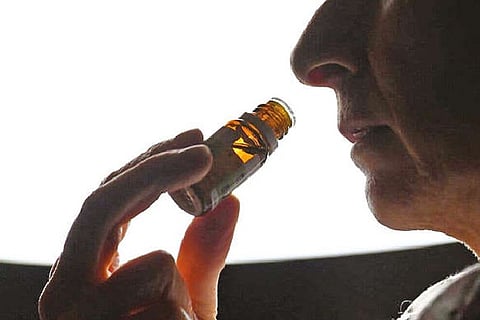

Chennai
These receptors trigger signals that your brain interprets as one or many smells. A team of scientists has identified the olfactory receptors for two common odour molecules: a musk found in soaps and perfumes and a compound prominent in smelly underarm sweat. The research team also discovered that more recent evolutionary changes to these olfactory receptors alter people’s sensitivities to those odours.
Olfactory receptors can be traced back hundreds of millions of years and are believed to be present in all vertebrates. Humans have around 800 olfactory receptor genes, but only about half of them are functional, meaning they’ll be translated into proteins that hang out in the nose and detect odour molecules. But within a functional gene, minor variations can cause changes in its corresponding receptor protein, and those changes can massively affect how an odour is perceived.
“There’s a molecule called androstenone,” said Joel Mainland, a neuroscientist at Monell Chemical Senses Center and an author of the new study. “And we know that some people smell that molecule as urine, some people smell that molecule at sandalwood, and some people don’t smell it at all.”
With that said, genetic changes aren’t the only thing underlying smell interpretation. “One is genetic and the other is experience, which includes things like the culture you grew up in,” said Hiroaki Matsunami, a molecular biologist at Duke University who was not involved in the research but whose work is focused on olfaction. The study by Dr. Mainland and colleagues was a collaborative effort between scientists in the United States and China. They sequenced the genomes of 1,000 people in Tangshan, China, who are members of the Han ethnic group. They did the same with an ethnically diverse cohort of 364 people in New York City. Participants were asked to rate, on a 100-point scale, the intensity and pleasantness of a range of common odours. The researchers then looked for associations between olfactory receptor genes and odours as well as variations within those genes and their potential impact on perception of the odour.
By sampling a large, diverse population of people the researchers were able to home in on odours whose perception was based in genetic differences between people, rather than cultural or experiential factors. That led them to molecules including trans-3-methyl-2-hexenoic acid and galaxolide.
Trans-3-methyl-2-hexenoic acid is considered one of the most pungent compounds in underarm sweat. Galaxolide is a synthetic musk often described as having a floral, woody odour that’s used in perfumes and cosmetics, but also things like kitty litter. The research team was able to identify olfactory receptor variants for those odours. In the case of the underarm odour, most people with the more evolutionarily recent gene variant found it more intense. The opposite was true for galaxolide.
Dr. Matsunami views this work as another example of human olfaction being more complex than people initially thought. He said that, although the major findings in the study involved just two scents, they’re adding to evidence that “odourant receptors as a group have extraordinary variety.”
Sam Jones is a journalist with NYT©2022
The New York Times
Visit news.dtnext.in to explore our interactive epaper!
Download the DT Next app for more exciting features!
Click here for iOS
Click here for Android